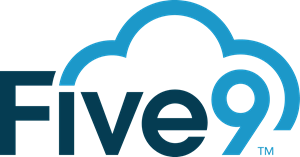How To Enhance Speed To Lead to Increase Conversion Rates and Build Loyalty

Speed to lead is a crucial sales component that enhances conversions, customer loyalty, and enables powerful business growth. The concept of speed to lead, or lead response times, focuses on responding rapidly to potential leads and quickly connecting sales teams with prospects.
Adopting effective strategies and embracing advanced technology to decrease speed to lead has become necessary for any modern-day business due to changing customer expectations and more competition.
Speed to lead statistics makes it clear that rapid responses are business-critical. One study found conversion rates are 8 times greater if leads receive a meaningful response within the first five minutes.
However, this study reviewed over 55 million sales activities at over 400 companies and found that 57.1% of first-call attempts occurred after over a week. That means more than half of lead response times have an 800% decrease in conversion rates due to taking too long.
A significant delay in the initial response results in a long conversion time frame that could be shortened and made more effective simply by responding to customers faster.
Decreasing speed is crucial to creating a higher conversion rate. At a high-level overview, businesses can focus on the following strategies:
- Utilization of sales enablement tools
- Integration of smart AI technology solutions
- Optimization of sales processes
These strategies make significant strides in responding faster and increasing conversion rates by providing sales teams the capabilities to respond to leads quickly and efficiently.
Once deployed, these elements enable companies to improve their response times, creating increased conversion rates, a more robust market presence, and lasting growth.
However, enhancing your speed to lead with these factors can be complex, as it can be challenging to understand the right tools and processes to adopt to help respond to customers faster.
That’s why we’ll explore the significance of speed to lead, the benefits of responding faster, and how to revamp responses for powerful business growth.
What is Speed to Lead Exactly?
Speed to lead describes the time it takes for a business to respond to a prospect after they complete a form requesting more information. Rapid response times are a vital aspect of the sales process, as quick and meaningful responses significantly affect converting the lead into a customer.
Roughly 66% of customers expect a response within 10 minutes to any marketing, sales, or customer activity — and this is overarching, not focused on B2B services that typically have even higher expectations.
This data underscores the importance of monitoring and optimizing speed to lead. Quick response times show your potential customers that you value their interest and give you an advantage over your competitors.
So, how fast is your sales reps' response to new leads? Calculating and continually optimizing this KPI helps keep customers engaged and plays a vital role in closing the sale. Speed to lead reflects your business's efficiency and customer-centric approach.
What Factors Determine Speed to Lead?
Speed to lead is a relatively straightforward metric that describes how quickly a potential customer responds. The speed to lead formula is:
Speed to Lead = Time of Contact – Time of Lead Generation

However, the workflows, processes, and other behind the scenes procedures are what ultimately determine the speed to lead, such as:
- The amount of incoming leads that require a response, which determines the pending queue
- Implementation of automated processes
- Number of salespeople, their experience levels, and training in using available tools
- The complexity of your lead process, such as information that needs to be prepared before calling the lead
- Integration of AI-driven tools to help build on the efficiencies of automation
You can see how the right blend of people, platforms, and processes is necessary to respond quickly, effectively, and ultimately convert a lead into a new customer.
Why Speed to Lead Matters

You’ll most likely need to adopt new platforms, provide training, and revise sales processes to increase speed to lead. Why is undertaking these changes worth the effort?
Rapid and effective initial contact with prospective customers is key to turning leads into new customers. Businesses that respond quickly to inquiries are more likely to succeed in an increasingly competitive marketplace.
Additionally, be aware that the quality of the initial contact is what matters. A simple text saying “We received your inquiry” does not count — a meaningful response that moves the sales process forward is what matters.
Fortunately, advancements in AI texting have created a way to provide meaningful responses to nurture the lead further until it’s time for a sales representative to reach out.
What is a Good Lead Response Time?
What should you aim for as you start striving to enhance your speed to lead? We’ve talked about responding within 5 minutes as the ideal timeframe, but are there other thresholds that influence conversion rates?
Once you’ve crossed the 30-minute threshold, one study found that you become 21 times less likely to convert the lead into a customer. Beyond this window, the likelihood of converting a lead will continue to drop.
However, keep in mind that we’re looking at overall trends in sales, which can vary based on the industry. Customers making high-value purchases may be more likely to still convert, such as a possibly longer speed to lead in real estate not necessarily be a deal breaker.
Ultimately, your goal is to be faster than the competition. Research shows that 78% of leads become customers of the company that responds first. It won’t be easy to stay on top of every competitor's response times but keep in mind that while 5 minutes and 30 minutes are general thresholds, you may need to respond even faster depending on your industry.
Related Article: Automate Lead Engagement to Increase Cart Conversion Rate Using Meera
How to Enhance Speed to Lead for Your Business
What can you do to respond faster with meaningful responses once a lead completes a lead capture form? Adopting a few straightforward, actionable strategies can help you accelerate speed to lead and efficiently engage with potential customers.
So, let's dive into practical methods that can transform how you respond to new leads to give yourself the best chance of closing the sale.
1. Analyze Your Current Speed to Lead
The first step towards reaching your goals is understanding the starting point. As a result, analyzing your current speed to lead is vital for enhancing your speed to lead and overall sales process.
A data-driven approach helps gain insights into where changes are needed and gauge how effectively your team currently responds to leads. Here are key steps to understand your starting part:
- Gather and analyze response time data: Collect data on how long your team takes to respond to new leads. Look at all channels like emails, calls, social media messages, and form submissions. Then, find out how long it took for customers to receive a meaningful response from sales teams.
- Evaluate lead conversion rates: Assess how response times correlate with conversion rates, which vary by industry. We’ve explored how faster responses often lead to higher conversion rates. However, it’s wise to understand the impact of response speed on sales success.
- Leverage AI for data insights: While not required, consider utilizing AI tools to analyze large datasets quickly and accurately to help better understand response times and how they affect sales. AI can identify patterns, provide predictive analytics, and forecast the impact of response times on future sales.
With a clear understanding of your current speed to lead and the insights gained from a data-driven analysis, the next step is to focus on improvement.
2. Organize a Well-Structured Sales Team
Optimizing speed to lead depends on the structure and efficiency of your sales team. A well-organized team enables rapid and effective lead management, improving response times and conversion rates.
A few crucial roles in the sales team that contribute to a faster speed to lead and the overall conversion process are:
- Lead Qualifiers: These experts make the first specialist contact once a lead capture form is completed. They assess incoming leads, focusing on their potential value relevance and gaining a better understanding of their needs. Analyzing information like lead source, interest level, and compatibility with your service ensures that only qualified leads move on to the next step in the process.
- Account Executives: Once leads are qualified, account executives take over. Their role involves understanding the specific needs of leads and presenting tailored solutions. Building relationships and negotiating deals are part of converting qualified leads into customers.
- Sales Managers: Managers monitor the sales team's overall performance; sales managers align the team with company objectives. In the context of speed to lead, they make sure automated tools and AI texting platforms are working correctly while also ensuring human experts are taking over in a timely manner.
By defining clear roles and fostering collaboration within the sales team, businesses can effectively manage leads, respond promptly, and increase their chances of successful conversions.
3. Optimize the Sales Process
Refining sales processes is essential for faster response times while enhancing lead conversion processes' overall efficiency and effectiveness.
Streamlining this process involves a few specific focuses to enable a more rapid and informed response to leads. A few ways to optimize existing workflows include the following:
- Incorporate automated lead processing: Utilize automation tools to capture, process, and ideally respond to incoming leads immediately. This upgrade minimizes manual effort and accelerates response times.
- Regular process testing: Designate a stakeholder, such as a manager, to monitor response times and conduct efficiency tests consistently. Testing ensures ongoing optimization of your sales process.
- Encourage prompt responses: Establish a reward system for sales staff who respond rapidly to leads. This practice fosters a culture of quick engagement, creates friendly competition, and contributes to better response times.
Focusing on these areas makes your sales process more efficient, directly impacting the speed at which leads are engaged and converted.
4. Focus on Building a Customer-Centric Approach

A customer-centric approach is necessary for enhancing the overall customer experience, starting with fast and meaningful initial responses.
As we’ve been exploring, we are striving for quick and efficient responses to customer inquiries. Implement systems that allow immediate assistance, such as advanced chatbots and automated response platforms, to ensure support is available outside standard business hours.
After the sale has been completed or lost, collect customer feedback to better understand what went well and areas with room for improvement. Use this information to adapt your strategies and platform usage to ensure they align with customer expectations.
Additionally, train your sales team to adopt a customer-centric mindset and how to use new tools to support this mindset. Empower teams with the tools and training necessary to provide a positive experience, from rapid and meaningful early interactions to becoming a loyal customer.
5. Utilize AI for Lead Management
Incorporating AI into your lead management process can significantly enhance your business's speed to lead. AI-driven tools offer a range of functionalities that streamline sales processes from fast responses to closing sales, including:
- AI Texting for instant engagement: Utilize AI-driven texting solutions to engage with leads instantly. These systems can initiate conversations, answer questions, and maintain engagement, ensuring no lead is left unattended. Then, the sales experts can step in after the lead is fully qualified and ready to proceed.
- Simplified scheduling within emails and text: AI can assist in the seamless scheduling of meetings directly through email or SMS interactions, reducing back-and-forth and speeding up the process of setting appointments.
- Personalized communication: AI can analyze prospect interactions to enable more personalized communication early in sales. Tailoring messages based on a lead's previous engagements increases relevance and effectiveness.
- Sentiment analysis: Implement AI for sentiment analysis to better understand the emotions and intentions behind customer communications. These deeper insights allow for more empathetic and targeted responses, enhancing lead engagement and conversion rates.
These AI functionalities empower sales teams to respond quickly and effectively to leads, enhancing overall engagement and increasing the likelihood of successful sales conversions.
Business Benefits of a Faster Speed to Lead
Understanding and optimizing speed to lead can lead to significant, valuable improvements in several key areas. We’ll discuss the tangible benefits your company can look forward to by focusing on faster response times.
Meet Customer Expectations
Potential customers in today's market have high expectations, especially when quickly receiving responses after submitting an inquiry. A quick speed to lead helps your business meet rising customer expectations and stand out in a competitive landscape.
Meeting customer's expectations by responding quickly can help with the following areas:
- Fast responses can improve a brand's image by showcasing a commitment to providing high-quality service.
- Quick engagement showcases a company's enthusiasm to help new leads learn more about the solution.
- Timely responses foster trust and confidence in the brand, demonstrating that customer inquiries and concerns are highly regarded.
- Fast responses also showcase to prospects that their time and interest are valued. This respect for their time can influence their decision to engage with your business further.
- Similarly, the faster a business responds, the lower the chance of a lead losing interest or turning to a competitor.
Imagine a scenario with Sarah, a potential customer or business owner, browsing your website. She's interested in your service, so she submits a question. The speed of your team's response not only addresses her immediate inquiry but also shapes her perception of your brand.
A quick reply sends a powerful message about your commitment to customer service, positively influencing Sarah's perception of your brand. It demonstrates that your business values her interest, significantly boosting her confidence in choosing your company over others.
Quick and attentive responses can be the deciding factor in building customer confidence and loyalty, helping set your brand apart in a competitive market.
Improved Conversion Rate with Quicker Speed to Lead

The relationship between conversion rate and speed to lead is a fundamental aspect of an overall sales strategy. Understanding how these two KPIs interact can provide valuable insights into improving business performance.
The typical conversion rate varies by industry, with 2.23% being the average for B2B conversion rates across all industries. When broken down further, conversion rates vary from 1.1% to 10%.
However, remember that earlier, we explored how responses within 5 minutes can have an 8 times greater conversion rate — but how frequent is a speed to lead that meets these requirements? Only 0.1% of inbound leads are engaged within this timeframe, meaning the vast majority of leads have a decreased conversion rate.
Speed to lead plays a crucial role in this context. Quick responses to leads can dramatically improve conversion rates. Businesses prioritizing rapid response times often see higher conversion rates than industry averages, as they can engage and nurture leads more effectively through the sales funnel.
Impacts of quick lead response on conversion rates include:
- Responding rapidly to inquiries demonstrates attentiveness and a commitment to customer service, fostering a positive relationship with potential customers.
- Quick responses build trust, showing prospects that a business is responsive and values their interest. Feeling ignored will start any sales process on the wrong foot.
- Rapid response times are pivotal in turning inquiries into sales. When leads are contacted quickly, the likelihood of conversion escalates, directly impacting your bottom line.
Gaining a Competitive Edge
Being the first to respond in a market where every second counts can set your business apart. Providing timely contact after a customer requests information is necessary to stay ahead of competitors and make a memorable impact on potential customers.
Additionally, the first company to respond is significantly more likely to close the sale and, ideally, create a loyal customer. Studies have shown that fast responses and being the first to respond creates a high probability of converting the lead into a client or customer.
Responsiveness also relies on implementing strategies across all communication channels, including email, phone, text, social media, and live chat. Coordinating response times across these platforms and related departments ensures a consistent and efficient approach to lead engagement.
If you’re a B2B operation, fast responses across any channel are crucial in moving the lead to the next step in the conversion funnel. Businesses have high expectations of potential partners, especially as these agreements can create an ongoing relationship.
Related Article: Business Communications Today: The Good, the Bad, and the Ugly
Enhance Speed to Lead with Meera’s AI Lead Nurturing
Improving speed to lead is essential for businesses aiming to improve sales performance and customer satisfaction. Investing in AI-driven technologies and automated sales tools like AI texting is crucial to outpacing the competition.
These advanced tools streamline lead management and provide insights for personalized customer interactions. The result is providing a quicker, more meaningful response to new leads to convert them into loyal customers.
The benefits of faster responses are significant: higher conversion rates and increased sales revenue. In a competitive market, the ability to engage rapidly and effectively with potential customers sets your business apart.
Embracing AI-driven tools and strategies that leverage them helps exceed customer expectations and drive long-term growth.
Meera is an industry leader in AI texting that helps you respond to customers within seconds of completing a lead capture form. We go beyond basic acknowledgment, and our AI chatbot can answer questions, gather additional data about the lead, and set appointments with sales teams conversationally.
Are you ready to decrease your speed to lead, convert more customers, and help sales reps be more effective at closing the sale? Reach out to us today to learn more about how our AI texting platform can improve your speed-to-lead times.
A programmer by trade, Nick Saraev is a freelance writer and entrepreneur with a penchant for helping people achieve their business goals. He's been featured on Popular Mechanics & and Apple News and has founded several successful companies in e-commerce, marketing, and artificial intelligence. When he's not working on his latest project, you can find him hiking or painting.


.png?width=512&height=512&name=guru%20(1).png)

.png?width=199&height=109&name=salesforce-logo1-removebg-preview%20(1).png)


.webp?width=716&height=569&name=banner-img%20(1).webp)



